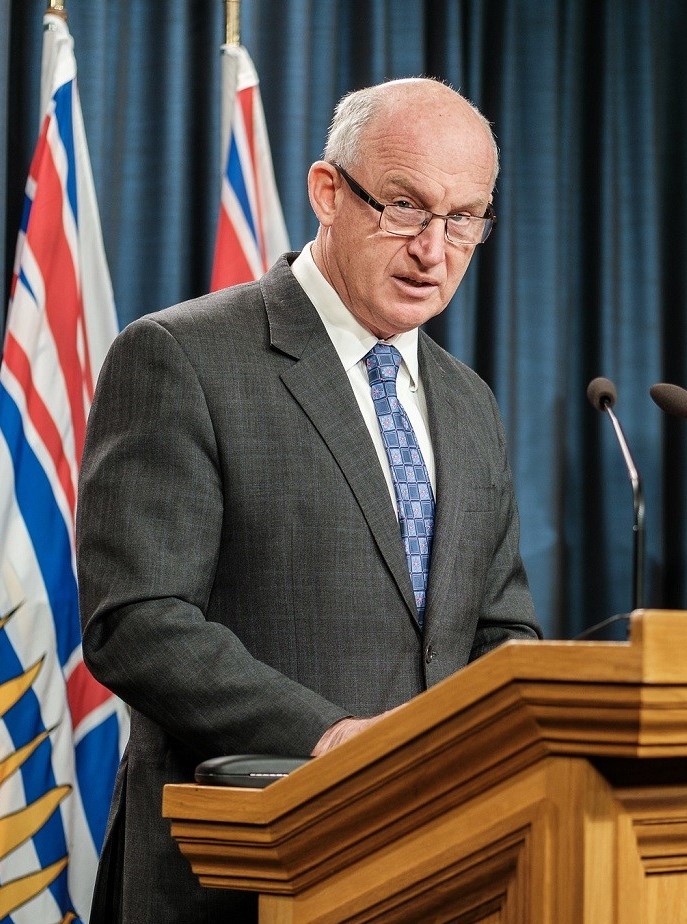THE Province is providing $1.6 million for a new campaign to help educate people about proper smoke-alarm use and reducing fire risks, which will save lives and protect first responders.
Government is partnering with the BC Injury Research and Prevention Unit (BCIRPU) to promote community fire-risk reduction, including a comprehensive smoke-alarm social marketing campaign to reduce the number of fire-related injuries and deaths in British Columbia.
“We are taking action to overturn the alarming trend of increasing fire-related deaths in our province,” said Mike Farnworth, Minister of Public Safety and Solicitor General, on Thursday. “Once a fire starts, people have very little time to get out of their home safely, making a working smoke alarm a critical tool for saving lives. I’m urging everyone to test their smoke alarms at least once every six months to keep their home and family safe.”
The Office of the Fire Commissioner (OFC) has released its annual report for 2022. According to the report, in 2022 there were 9,087 fires resulting in 212 injuries and 86 deaths. Further, a working smoke alarm was present at only 45% of the reported residential structure fires. The statistics and trends identified in the report help local government fire services effectively allocate personnel and resources to reduce community fire risk, and the number of fires and fire-related injuries and deaths.
The Province has partnered with Statistics Canada to build a Community Fire-Risk Reduction Dashboard. Alongside the education campaign, these two integrated projects will help B.C. fire services prevent fires, reduce injuries and save lives, which is crucial given the increasing trend in fire-related deaths.
“The Office of the Fire Commissioner annual report provides important trends, which highlight the work that needs to be done to stop these fires from happening in the first place,” said Brian Godlonton, B.C.’s Fire Commissioner. “The dashboard combined with the smoke-alarm and social-marketing campaign will not only help prevent fires but, more importantly, prevent injuries and save lives.”
The dashboard provides statistical and geographical information to help B.C.’s fire services identify areas in communities at greatest risk of home fires. This will help protect residents, firefighters, and reduce the social and financial impacts to communities affected by fires. The dashboard data is being used by the BCIRPU to develop the smoke-alarm education campaign, which will be broadcast around the province in the fall.
The OFC launched pilots of the dashboard in 11 cities, including Coquitlam, Surrey, Kamloops, Sidney and Port Alberni in July 2022. The dashboard will be rolled out throughout the province in the coming weeks.
Larry Thomas, Fire Chief, City of Surrey, said: “Every fire department big or small can be proactive with community risk-reduction initiatives to reduce the fire injuries and deaths associated with residential structure fires. The dashboard will help with targeted risk reduction for populations within our communities, which are over-represented in fire death and injury statistics.”
Anil Arora, Chief Statistician of Canada, Statistics Canada, said: “We are pleased to continue our collaboration with the British Columbia Office of the Fire Commissioner, leveraging data to save lives. The fire risk reduction dashboard demonstrates the need for national fire-incident information that can be integrated with other types of data for community-specific fire-prevention solutions.”
BACKGROUNDER
Facts about fires, fire-related deaths in B.C.
* According to the Office of the Fire Commissioner’s annual report: from 2018 to 2022, there was a 207% increase in fire-related deaths throughout B.C.
* In 2022, there were 86 fire-related deaths, a 46% increase from 2021.
* The leading causes for structure fires continues to be smoking materials.
* Most fire-related deaths and injuries occur in people’s homes.
* People over the age of 65 were over-represented in fire-related deaths.
* On June 8, 2023, Statistics Canada released a report from the National Fire Incident Database including data from 2015 to 2021.
* Seven jurisdictions provided fire-incident data, including Nova Scotia, New Brunswick, Ontario, Manitoba, British Columbia and the Yukon.
* The collection and analysis of this data will provide key information for the development of public policy around fire-risk reduction.
* Trends from the Statistics Canada report are consistent with B.C.’s findings and include:
* Fire-related deaths during the first year of the pandemic rose from 148 in 2019 to 199 in 2020, a 34% increase. This was the highest number of fire-related deaths in more than 10 years.
* Residential fires account for most fire deaths. In 2021, of the 202 fire-related deaths, three out of four occurred in residences.
* From 2015 to 2021, 37% of residential fires had a working smoke alarm, while 12% had smoke alarms that did not activate, and 13% had no smoke alarm installed.
* Death rates were lower in homes with working smoke alarms, where 26% of incidents resulted in death. Homes without a working smoke alarm, including those without an installed alarm or the status is unknown accounted for three out of four deaths (74%).
* B.C. ranks second, after Ontario in terms of the number of fire-related deaths and injuries.












